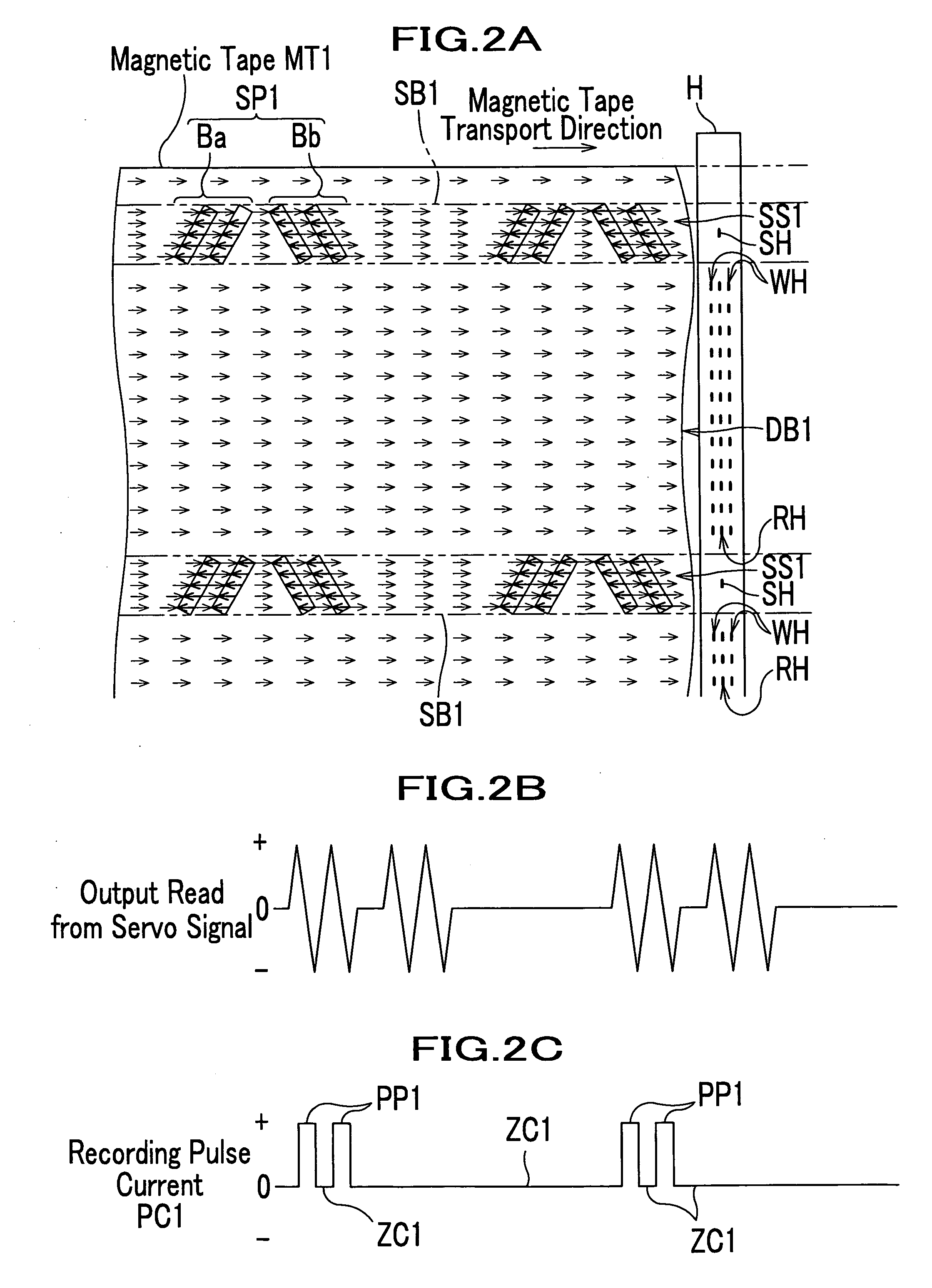Magnetic recording medium
a magnetic recording medium and recording medium technology, applied in the direction of digital recording, maintaining head carrier alignment, instruments, etc., can solve the problems of failure of reading/reproducing operation, inability to control the position of the magnetic head with high precision, and inability to record servo signals onto the magnetic recording medium
- Summary
- Abstract
- Description
- Claims
- Application Information
AI Technical Summary
Benefits of technology
Problems solved by technology
Method used
Image
Examples
example 1
[0090]
[0091] Following components were supplied to an open kneader by a following proportion, and were kneaded therein. Then, the kneaded mixture was dispersed by a sand mill. Five parts of polyisocyanate (Coronate L manufactured by Nippon Polyurethane Industry Co., Ltd.) was added to the dispersed solution, and 40 parts of a mixed solvent of methyl ethyl ketone and cyclohexanone was further added thereto. The obtained solution was filtered by use of a filter having an average pore size of 1 .mu.m. In this way, a coating solution for a magnetic layer was prepared.
[0092] Magnetic Layer
1 Ferromagnetic metal powder 100 parts (Composition Fe / Co = 100 / 30) Hc 2350 Oe (187.0 A / m) Specific surface area by BET method 49 m.sup.2 / g Crystalline size 120 nm Particle size (major axis diameter) 0.070 .mu.m Acicular ratio 7 .sigma.s: 145 emu / g (145 A .multidot. m.sup.2 / Kg) Vinyl chloride copolymer 10 parts (MR-110 manufactured by Nippon Zeon Co., Ltd) Polyurethane resin 6 parts .alpha.-Al.sub.2O.s...
example 2
[0104] A blank magnetic tape was fabricated in the same manner as that of the example 1, with the exception that the pressuring treatment was performed at a temperature of 100 degrees at a speed of 100 m / min with the calender device. The servo signal was written onto the fabricated blank magnetic tape in the same manner as that of the example 1, thereby providing a magnetic tape for digital recording.
example 3
[0105] A blank magnetic tape was fabricated in the same manner as that of the example 1, with the exception that the pressuring treatment was performed at a temperature of 100 degrees at a speed of 300 m / min with the calender device. The servo signal was written onto the fabricated blank magnetic tape in the same manner as that of the example 1, thereby providing a magnetic tape for digital recording.
PUM
| Property | Measurement | Unit |
|---|---|---|
| thickness | aaaaa | aaaaa |
| surface roughness | aaaaa | aaaaa |
| surface roughness | aaaaa | aaaaa |
Abstract
Description
Claims
Application Information
 Login to View More
Login to View More - R&D
- Intellectual Property
- Life Sciences
- Materials
- Tech Scout
- Unparalleled Data Quality
- Higher Quality Content
- 60% Fewer Hallucinations
Browse by: Latest US Patents, China's latest patents, Technical Efficacy Thesaurus, Application Domain, Technology Topic, Popular Technical Reports.
© 2025 PatSnap. All rights reserved.Legal|Privacy policy|Modern Slavery Act Transparency Statement|Sitemap|About US| Contact US: help@patsnap.com



